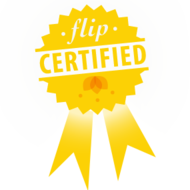It may be hard to believe, but before the massive exchange of goods and organisms during the post-Columbian era, many of the crops associated with certain areas simply were not there. Simply put,
"before the Columbian Exchange, there were no oranges in Florida, no bananas in Ecuador, no paprika in Hungary, no tomatoes in Italy, no potatoes in Ireland, no coffee in Columbia, no pineapples in Hawaii, no rubber trees in Africa, no cattle in Texas, no donkeys in Mexico, no chili peppers in Thailand or India, and no chocolate in Switzerland."[1]
In the Columbian Exchange, European explorers and settlers brought livestock, plants and goods to support their lifestyles, to trade with others and to set up farming operations conducive to the New World climate. Similarly, they brought back exotic new goods from the New World and later, farmed familiar products like sugarcane in a hospitable climate with slave labor for massive profits.
I wanted to present this cycle in a way that I knew the kids would remember, so I planned a relay activity. I did, however, also want to make sure to address the topic with the seriousness that it deserved, considering that slave labor and death from disease were tragic parts of this exchange. We discussed the exchange and read personal accounts in the day leading up to the relay, then performed the relay game only after we had studied and discussed it extensively.
At the beginning of the period, we watched a quick BrainPop video that summed up both the positive and negative effects of the centuries-long Columbian Exchange. We then found an empty hallway (or, if we were lucky, an empty room or gym) and set up the game.
I had two buckets, one labeled as the Old World (Europe, Asia and Africa) and one as the New World (North and South America). One bucket was placed just a few feet from the starting line and the second bucket was about 20 feet away. I made two sets of cards for the activity -- each with about 10 products from the Old World that were brought to the Americas and about 10 products that were brought from the Americas back to the Old World. I color-coded the cards on construction paper and laminated them for durability.
I scattered the two sets of blue "Old World" cards on either side of the Old World bucket, then scattered the red "New World" cards around the New World bucket. In a relay style, each team had to send one person at a time to collect a blue card, bring it to the New World bucket while calling out what it pictured, then grab a red card, bring it back to the Old World bucket, then tag up and send a new team member. We ran the activity twice, each round lasting about 3-5 minutes.
After the relay, we returned to the classroom and filled in some quick notes about the goods, ideas, animals and diseases exchanged during the game. I was impressed with how many items the students could recall after playing the game!















